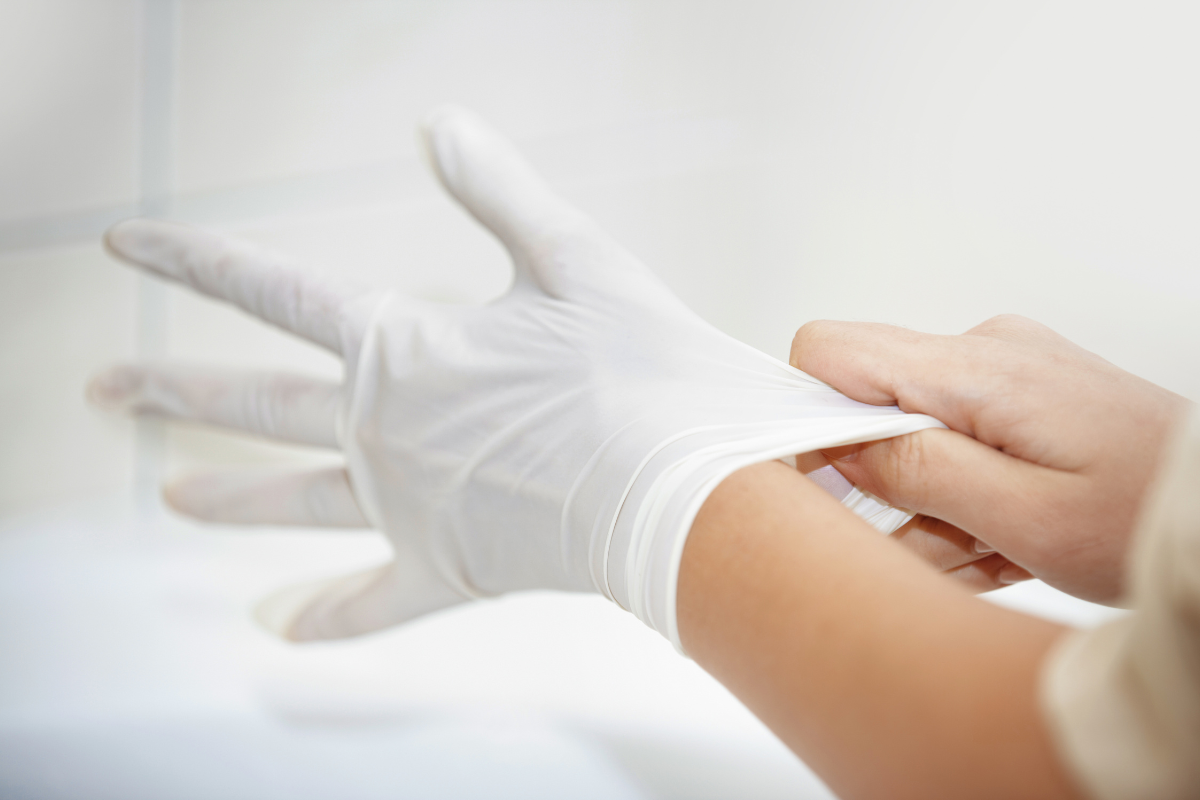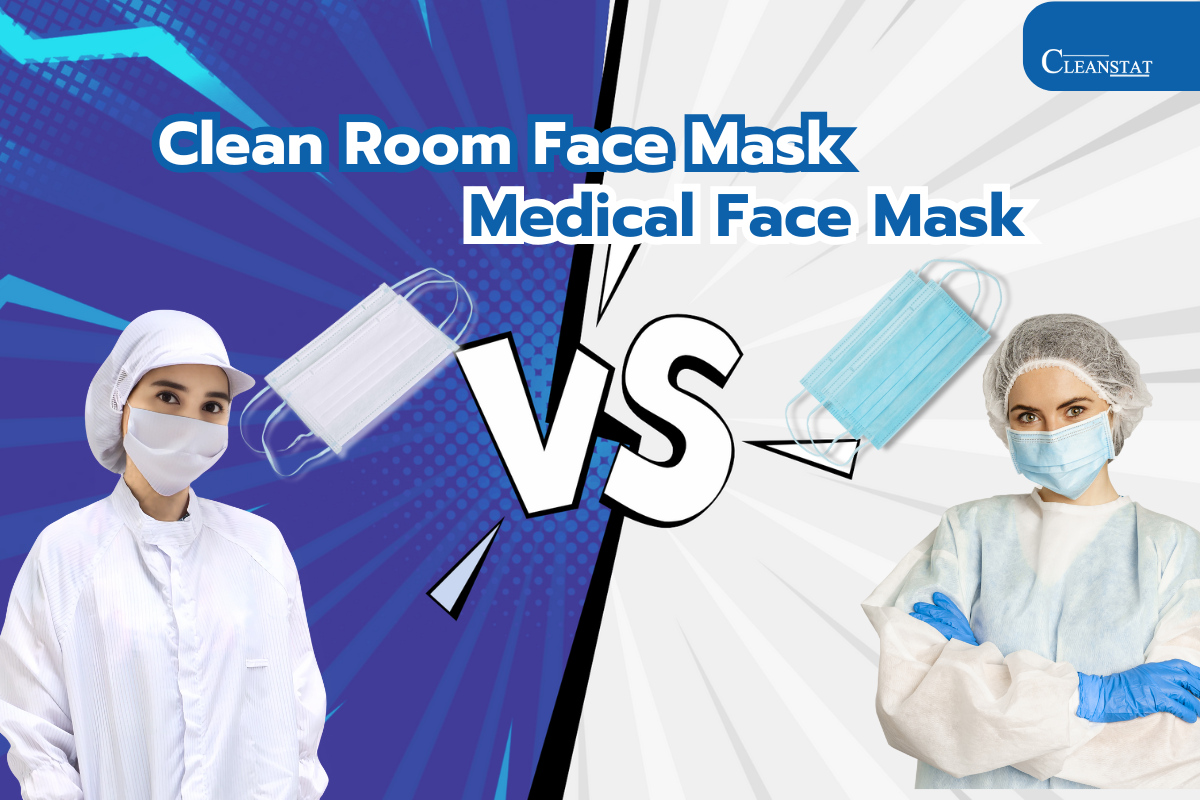Cleanrooms are highly controlled environments where cleanliness is of utmost importance. Contaminants such as dust particles and biological pollutants must be minimized according to strict standards, such as ISO Class 5 or Class 100. Proper use of rubber gloves is a critical measure to prevent contamination from workers’ hands entering the production or research process. Gloves act as a protective barrier, reducing the risk of bacteria, pathogens, and small particles that could compromise the quality of products or research outcomes.
Furthermore, contamination prevention minimizes the potential loss of resources and time caused by errors in precision-dependent processes like electronics manufacturing, semiconductor production, or biological product research. Even minor contamination can significantly affect quality and performance. Therefore, wearing gloves is not merely a supplementary measure but a fundamental necessity at every stage of cleanroom operations.
Types of Rubber Gloves
- Latex Gloves Latex gloves are a popular choice for cleanroom applications due to their natural rubber material, which offers high flexibility and a snug fit. They are suitable for tasks requiring precision, such as assembling small components, inspecting objects, or performing meticulous processes. However, individuals allergic to natural rubber proteins may find latex gloves unsuitable. Alternatives that pose no risk of allergic reactions should be considered in such cases.
- Nitrile Gloves Nitrile gloves are an excellent alternative for those allergic to latex gloves. Made from synthetic rubber, they are free of proteins that cause allergies. Nitrile gloves are particularly durable and resistant to chemicals, oils, and fats, making them ideal for handling chemicals in cleanrooms. Additionally, they offer high flexibility and a snug fit, ensuring convenience and safety during use while minimizing the risk of punctures during operation.
Steps for Proper Glove Usage

1. Wash Hands Thoroughly Before wearing gloves, clean your hands thoroughly with soap or an antiseptic solution to remove dirt and microorganisms. Proper handwashing not only reduces contamination risk but also prepares the hands for glove use. After washing, dry your hands with lint-free paper or a clean cloth to prevent contamination.
 2. Wear Gloves Carefully Begin by holding the glove at the fingertips and gently pulling it down onto the hand. Avoid excessive contact with the glove’s exterior to minimize contamination risk. Once one glove is worn, use the gloved hand to assist in wearing the second glove to avoid direct contact. If accidental contact occurs with the glove’s exterior, consider replacing the gloves immediately.
2. Wear Gloves Carefully Begin by holding the glove at the fingertips and gently pulling it down onto the hand. Avoid excessive contact with the glove’s exterior to minimize contamination risk. Once one glove is worn, use the gloved hand to assist in wearing the second glove to avoid direct contact. If accidental contact occurs with the glove’s exterior, consider replacing the gloves immediately.
 3.Inspect the Gloves After putting on the gloves, check for any tears, punctures, or damage. If any issues are detected, remove and replace the gloves immediately to ensure safe and contamination-free operation.
3.Inspect the Gloves After putting on the gloves, check for any tears, punctures, or damage. If any issues are detected, remove and replace the gloves immediately to ensure safe and contamination-free operation.
Precautions for Glove Usage
- Do Not Reuse Gloves Always use a new pair of gloves each time you leave and re-enter the cleanroom to prevent cross-contamination.
- Avoid Touching Your Face and Unnecessary Items While wearing gloves, avoid touching your face, equipment, or items unrelated to the task at hand to prevent transferring contaminants to the work environment.
- Inspect Gloves Before Use It is essential to inspect gloves for damage before use, particularly in processes requiring high precision, such as manufacturing medical or electronic devices.
Storing Rubber Gloves
Proper storage of rubber gloves is vital to maintain their quality and extend their usability. Store gloves in a dry, cool place away from direct sunlight or excessive heat, as high temperatures and UV light can degrade the rubber material, causing brittleness and cracks. Additionally, keep gloves in their original packaging or sealed containers to minimize contamination risks from airborne dust or dirt.
Using rubber gloves correctly in a cleanroom is essential for maintaining cleanliness and reducing contamination risks. Choosing suitable gloves, such as latex or nitrile gloves, and following the correct steps for wearing and handling them will enhance safety and efficiency in cleanroom operations. Proper glove storage further ensures their quality and effectiveness for future use. By adhering to these guidelines, all processes within the cleanroom can proceed smoothly and securely.









